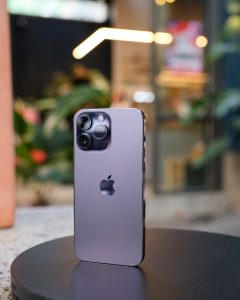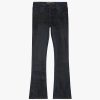Understanding the Device roster for App Distribution Still, you can use the device roster device catalog to assess device catalog which bias are compatible with your app and insure wide vacuity, If you’ve uploaded an app pack to Play Console. The device roster is a precious tool for managing your app’s targeted bias and rejections. In this composition, we’ll explore how to use the device roster efficiently to optimize your app’s distribution. Getting Started with the Device roster Before you can pierce the device roster, you need to accept the Terms of Service associated with it. Only the account proprietor or a stoner with the” Manage product releases” authorization can accept device catalog these terms. Once you’ve accepted the terms for one
Understanding the Device roster for App Distribution
Still, you can use the device roster device catalog to assess device catalog which bias are compatible with your app and insure wide vacuity, If you’ve uploaded an app pack to Play Console. The device roster is a precious tool for managing your app’s targeted bias and rejections. In this composition, we’ll explore how to use the device roster efficiently to optimize your app’s distribution.
Getting Started with the Device roster
Before you can pierce the device roster, you need to accept the Terms of Service associated with it. Only the account proprietor or a stoner with the” Manage product releases” authorization can accept device catalog these terms. Once you’ve accepted the terms for one app in your account, you will be suitable to use the device roster for all your apps. still, please note that the device roster does not apply to instant apps.
What’s a device model? What’s a device variant?
In the environment of the device roster, a device model refers to a specific make and model of a device. On the other hand, a device variant represents different performances of the same device model, similar as varying operating system performances.
What bias show up in the roster? When do new bias show up?
The device roster displays a comprehensive list of available bias. It includes both supported and barred bias. Google Play continuously updates the device roster, so new bias are added regularly.
Will my app or game be available on a new device?
Whether your app or game will be available on a new device depends on your overload affirmations and press rejection rules. Manifest affirmations define the bias your app supports, and rejection rules allow you to count specific bias from distribution.
What’s device instrument? How are uncertified bias treated on Google Play?
Device instrument ensures that a device meets Google’s comity norms. Uncertified bias may not have access to certain Google services. On Google Play, uncertified bias are treated like any other bias, but it’s essential to consider comity issues when targeting these bias.

Photo by Thai Nguyen on Unsplash
Understand Your App’s Device Targeting
Your app’s targeted bias are determined by two factors manifest affirmations and press rejection rules. Manifest affirmations define the bias your app officially supports. For illustration, setting minSdk to Android 9 ensures only bias with Android 9 are eligible for your app. still, bias with different Android performances might be eligible grounded on their variants.
Console rejection rules can be applied at two situations
Device Model position In this script, all bias with a particular device catalog model are barred from distribution. Rule position Rule– grounded rejections apply at the individual– device position, just like manifest affirmations. Some device models may be incompletely barred, meaning some variants may still be eligible for your app. To view available bias and understand your app’s distribution on Google Play Open Play Console and go to the Device roster runner( Release> Reach and bias> Device roster). Select the All, Supported, barred, or Targeted tabs. You can download the list of bias as a CSV train by clicking” Export device list” on the right side of the runner.To check the targeting status of an individual device model, view the” Status” column in the Device list or Device details runners.
Device Model Targeting Statuses
Understanding device model targeting statuses is pivotal for optimizing your app’s distribution Supported bias that meet your manifest affirmations and are eligible for your app’s installation. Barred bias that have been explicitly barred from your app’s distribution. Incompletely barred bias that may have some rejections due to rule– grounded targeting. Not Supported bias that don’t meet your overload affirmations and aren’t eligible for your app.
Hunt and Filter the Device List
You can efficiently manage the device list using the hunt bar and filters Use the hunt bar to find specific device models or search for individual bias. Filter the list by manufacturer, device, or other attributes to constrict down the results.
View Device Details
Count Your App from Distribution to Certain bias To count bias from your app’s distribution on Google Play Set up rejection rules to help specific bias from seeing or installing your app. Keep in mind that rejection rules do not apply to internal testers, and they do not help druggies from carrying your app through other channels like side loading.
Conclusion
Effectively exercising the device roster is essential for optimizing your app’s reach and icing comity with a wide range of bias. By understanding device targeting, exercising rejection rules, and regularly reviewing the device roster, you can enhance your app’s distribution strategy and reach a broader follower ship on Google Play.























Leave a Comment
Your email address will not be published. Required fields are marked with *